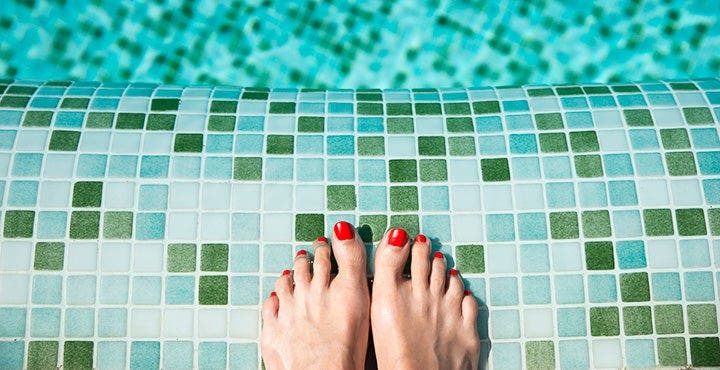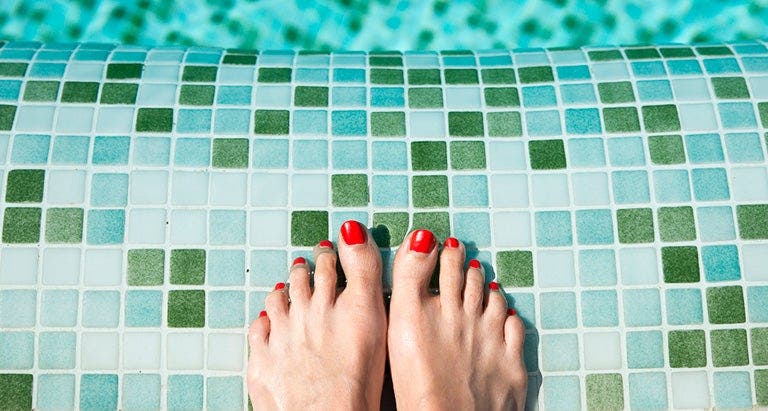Know before you go: Community pool


On hot and muggy days, no place sounds quite as inviting as your local pool. Why not make the most of the situation and turn a leisurely dip into an opportunity to move more? The community pool is the perfect place to burn some calories and increase your fitness as you splash around. To fully enjoy your time and be safe in the pool, follow these tips from Jenni Lynn Patterson-LaCour, a swim instructor at New York Health & Racquet Club in New York.
Before you go…
Check the schedule: First things first, make sure there’s some open water before you head out the door, since some community pools allot time to swim teams, youth programs, seniors, and more. If your goal is lap swimming, you’ll want to see when you’re guaranteed not to have a slew of kids splashing all around you.
Get in a flexible mind-set: “You’ll likely be sharing the pool with many other people so you may not get to do the exact workout you had intended on,” says Patterson-LaCour. If there are no lap lanes, think about doing some vertical aquatic exercises or water walking or running. Or get out of the water and do some stretches or bodyweight exercises on the pool deck (bring a yoga mat for comfort) while you wait for your opportunity to get wet.
Bring…
Goggles and a swim cap: If you’re planning on putting your head under water, be prepared. Many public pools require swim caps, especially for those with long hair, and anyway it’s healthier for your hair not to be exposed to pool chemicals, advises Patterson-LaCour. (Quick tip: Slather some leave-in conditioner or coconut oil into your hair prior to putting on your cap; this can help protect color-treated hair from chlorine and other harsh chemicals). Goggles are also key to protecting your eyes (and a no-brainer if you wear contacts).
Shower stuff: Bring a small towel and a travel-size shampoo, conditioner, and body wash for your post-pool shower.
Expect to…
Shower off: Although not always strictly enforced, many public pools request users to rinse themselves before diving in. That’s for your sake as well as everyone else’s. “A pre-swim shower helps minimize the irritating, smelly substances formed in the pool water when impurities introduced from the bodies of swimmers combine with chlorine,” notes Patterson-LaCour.
Mind your (lane) manners: Lap swimming has its own special etiquette. Typically, if you’re sharing a lane with one person, you can ask to “split” the area (you each take one side). More than two people requires circle swimming, where you follow each other in a circular pattern (up one side and back on the other).
Lap swimming lanes are often divided into speed (slow, medium, fast). Be realistic about where you fit in. “If you notice someone swimming behind you who seems to be catching up, or going faster than you, stop at the end of the lane when you get to the wall and let them pass you,” says Patterson-LaCour. “This is not the time to push your pace by trying to stay ahead of a faster swimmer—it only creates a tense situation and you miss out on practicing your stroke technique and kicking patterns.” Try to keep at least one full body length behind the swimmer in front of you.
Looking to air out your speed with some sprints? Wait until you’ve got a big open stretch of water, or ask your fellow lane members if you can take the lead for the lane—this way no one gets hurt.
Listen to the lifeguard: He or she is there to do a very important job, so mind instructions and only strike up a conversation when he or she isn’t visibly monitoring the pool, unless it’s an emergency or you feel unsafe.
RELATED: The 30-minute water workout
